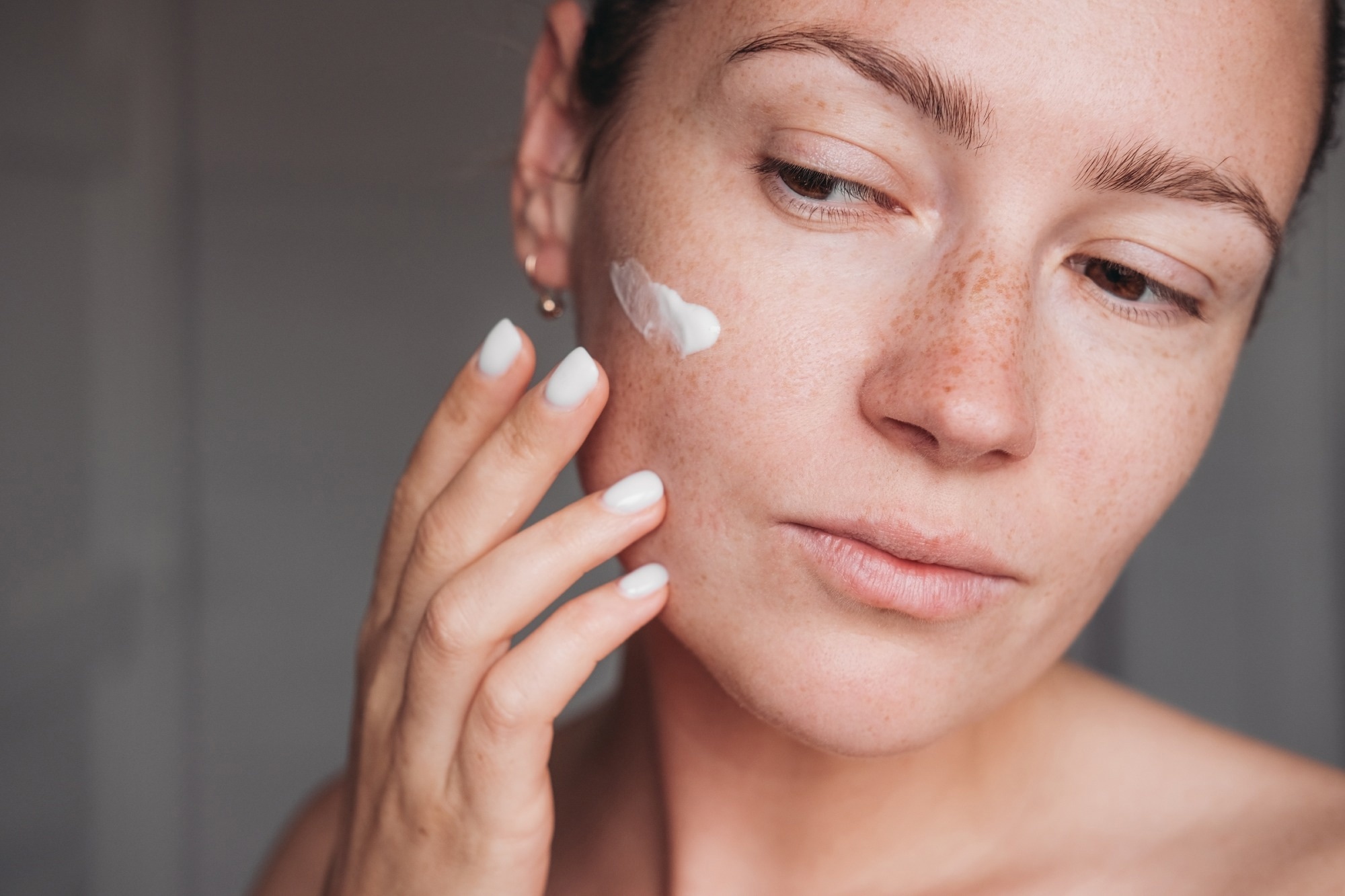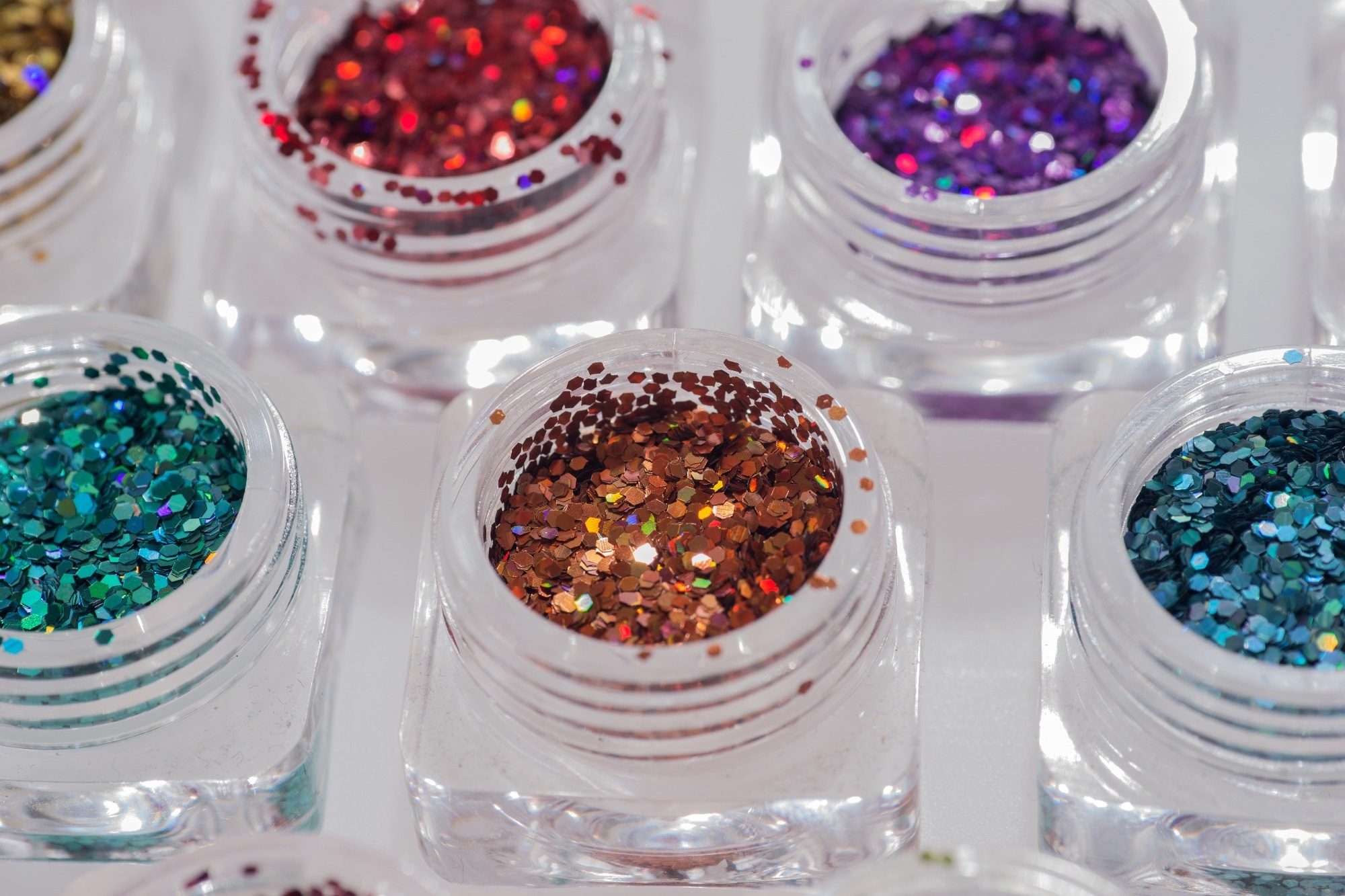Humans have used cosmetics for self-expression throughout recorded history, but modern-day makeup can often come with an environmental price tag. What are the latest innovations making everything from sunscreen to mascara more sustainable?
 Image Credits: dabyki.nadya/Shutterstock.com
Image Credits: dabyki.nadya/Shutterstock.com
Historical Background and Safety Regulations
Cosmetics are generally considered harmless, and very few cases of adverse effects were recorded before the 20th century. Until recently, very little was known about their long-term side effects on the human body and the environment. Only in the mid-20th century did regulators begin to scrutinize what goes into the pot.1
Even now, there is no single definition for cosmetics or personal care products. In the EU, for example, sunscreen is regulated under a cosmetic label, while in Japan, hair dyes are considered not cosmetics but quasi-drugs and, as a result, undergo stricter safety testing. Global standardization remains elusive.
Today, certain cosmetic ingredients are scorned more than others—plastic microbeads, once marketed as a modern exfoliant to replace oatmeal or walnut shells, now end up in rivers and seas. In a bid to make cosmetics more sustainable, research scientists in industry and academia are looking for ways to bring makeup into a more circular economy, from designing less harmful packaging to using safer, more eco-friendly ingredients.1
Problems with Conventional Cosmetic Ingredients
Conventional cosmetic ingredients, such as silicones, parabens, and synthetic dyes, pose risks to both humans and the environment, contributing to marine pollution, bioaccumulation, and even hormone disruption. 2
Microplastics, particles of less than five millimeters, were once widely used in personal care products, particularly facial scrubs and cleansers, where plastic microbeads replaced natural exfoliants, such as oatmeal or walnut shells.3 Now, attempting to lower their environmental impact, industry is beginning to return to more natural solutions.
Packaging is another problem, as a primary source of macroplastic pollution. Single-use plastic jars, tubes, and pumps contribute to both landfill waste and ocean plastic pollution. 3
Back in 2008, a study investigated the estrogenic effects of oxybenzone, a common ingredient in sunscreens, on aquatic life. Using rainbow Trout and Japanese medaka, researchers found that high concentrations of oxybenzone (620–749 μg/L) induced vitellogenin production in male Japanese medaka, which is a biomarker of estrogenic activity, and negatively impacted egg production and hatching success. 4
Why Switch to Alternatives?
Growing awareness of these environmental concerns has fuelled consumer demand for "green" cosmetics made from naturally derived ingredients. Switching to more sustainable organic cosmetics seems more ethical to many consumers today. 5
Sustainability in beauty products is not just a case of swapping petrochemically-derived materials for plants. Natural ingredients can be unstable, inconsistent, or even toxic in some cases, making research in this area vital for product safety. 5
Researchers are experimenting with novel biodegradable exfoliants such as silica or seed husks, developing natural preservatives from essential oils, and dyes from algae. But to develop wholly sustainable cosmetics, more is needed than simply sourcing plant-based ingredients. Sustainable cosmetics require an integrated approach combining ecology, biotechnology, toxicology, regulatory science, and economics to ensure products are safe for consumers and environmentally friendly. 5
Download your PDF now!
Innovative Sustainable Alternatives
Reformulating Lipsticks and Moisturisers with Sustainable Ingredients
In a 2025 study, published in Sustainable Chemistry and Pharmacy, researchers tested sustainable substitutes in two common products: lipsticks and moisturizers. They developed five formulations of each, substituting conventional raw materials with renewable or biodegradable alternatives.7
In lipsticks, key properties such as pay-off (colour transfer) and friction (application feel) differed across the sustainable variants. One formulation achieved high colour pay-off but also increased friction, illustrating trade-offs in consumer sensory experience. In moisturizers, spreadability was strongly influenced by the choice of emulsifier, finding that natural emulsifiers altered texture more than traditional ones. 7
In a similar study in the International Journal of Cosmetic Science, scientists used alkenones extracted from marine algae as the base wax for lipsticks. A consumer-based study was conducted involving 14 volunteers, with three different variations of alkenone-based lipsticks. Their characteristics, such as firmness, pay-off, and stability, were tested against a control sample.
The researchers found that, overall, the lipstick containing the highest amount of alkenones performed better than the rest in all aspects and was also liked better by consumers. 8
Advances in Green Chemistry
Green chemistry principles involve renewable feedstocks, design for biodegradability, and process efficiency. A 2015 study in Cosmetics emphasized the importance of integrating these principles into cosmetic science to minimize environmental impact and maintain safety and efficacy.
A few examples include the substitution of petrochemical emollients with plant-derived oils and waxes, the adoption of biodegradable polymers, the valorization of agricultural by-products (e.g., fruit peels, coffee grounds) as cosmetic actives or exfoliants, and energy-efficient processes such as enzymatic catalysis and supercritical fluid extraction. 9,10
Glitter, traditionally made from PET plastic and aluminium, is renowned as a microplastic pollutant. Biodegradable alternatives, often derived from plant cellulose, can offer the same sparkle. Similarly, natural pigments from beetroot, turmeric, or spirulina, and microbially-fermented colourants, are replacing synthetic dyes. 10
 Image Credit: kelifamily/Shutterstock.com
Image Credit: kelifamily/Shutterstock.com
Conclusion
Consumers want products that do less harm, regulators want tighter standards, and researchers are keen to find more sustainable alternatives. But the industry is still wrestling with trade-offs between performance, safety, and price.
The complicated mixtures and unpredictability of natural ingredients demand rigorous research and scientific testing to ensure safety and effectiveness before they can be added to personal care products. For the cosmetic industry to become truly sustainable, continued research and innovation in this field are essential.
References and Further Reading
- Nohynek, G. J., Antignac, E., Re, T., & Toutain, H. (2010). Safety assessment of personal care products/cosmetics and their ingredients. Toxicology and applied pharmacology. https://doi.org/10.1016/j.taap.2009.12.001.
- Couceiro, B., Hameed, H., Vieira, A.C., Singh, S., Dua, K., Veiga, F., Pires, P.C., Ferreira, L., & Paiva-Santos, A.C. (2025). Promoting health and sustainability: exploring safer alternatives in cosmetics and regulatory perspectives. Sustainable Chemistry and Pharmacy. https://doi.org/10.1016/j.scp.2024.101901.
- Fendall, L. S., & Sewell, M. A. (2009). Contributing to marine pollution by washing your face: microplastics in facial cleansers. Marine pollution bulletin. https://doi.org/10.1016/j.marpolbul.2009.04.025.
- Coronado, M., De Haro, H., Deng, X., Rempel, M. A., Lavado, R., & Schlenk, D. (2008). Estrogenic activity and reproductive effects of the UV-filter oxybenzone (2-hydroxy-4-methoxyphenyl-methanone) in fish. Aquatic toxicology (Amsterdam, Netherlands). https://doi.org/10.1016/j.aquatox.2008.08.018.
- Rotter, A., Varamogianni-Mamatsi, D., Zvonar Pobirk, A., Gosenca Matjaž, M., Cueto, M., Díaz-Marrero, A. R., Jónsdóttir, R., Sveinsdóttir, K., Catalá, T. S., Romano, G., Aslanbay Guler, B., Atak, E., Berden Zrimec, M., Bosch, D., Deniz, I., Gaudêncio, S. P., Grigalionyte-Bembic, E., Klun, K., Zidar, L., Coll Rius, A., … Mandalakis, M. (2024). Marine cosmetics and the blue bioeconomy: From sourcing to success stories. iScience. https://doi.org/10.1016/j.isci.2024.111339.
- Purvis, B., Mao, Y., & Robinson, D. (2019). Three pillars of sustainability: in search of conceptual origins. Sustainability Science. https://doi.org/10.1007/s11625-018-0627-5.
- Spaulding A, Baki G. (2025). Sustainable cosmetic ingredient alternatives to replace conventional ingredients: Case studies in moisturizers and lipsticks. Int J Cosmet Sci. https://doi.org/10.1111/ics.70020.
- Huynh, A., Maktabi, B., Reddy, C. M., O'Neil, G. W., Chandler, M., & Baki, G. (2020). Evaluation of alkenones, a renewably sourced, plant-derived wax as a structuring agent for lipsticks. International journal of cosmetic science. https://doi.org/10.1111/ics.12597.
- Franca, C. C. V., & Ueno, H. M. (2020). Green cosmetics: Perspectives and challenges in the context of green chemistry. Desenvolvimento e Meio Ambiente. https://doi.org/10.5380/dma.v53i0.62322.
- Ribeiro, A. S., Estanqueiro, M., Oliveira, M. B., & Sousa Lobo, J. M. (2015). Main Benefits and Applicability of Plant Extracts in Skin Care Products. Cosmetics. https://doi.org/10.3390/cosmetics2020048.
Disclaimer: The views expressed here are those of the author expressed in their private capacity and do not necessarily represent the views of AZoM.com Limited T/A AZoNetwork the owner and operator of this website. This disclaimer forms part of the Terms and conditions of use of this website.